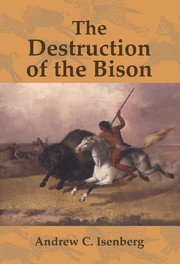1 - The Grassland Environment
Published online by Cambridge University Press: 05 August 2012
Summary
The Great Plains, extending from the Missouri River valley in the east to the base of the Rocky Mountains in the west, and from Canada south to Mexico, is the largest biome in North America. Although flatness is popularly believed to be the distinguishing characteristic of the plains, its topography is quite varied. Between 50 and 70 million years ago, surging molten rock from beneath the earth's surface created the Black Hills of western South Dakota and several ranges in Montana, among them the Highwood, Bearpaw, Judith, and Crazy Mountains. During the last five to ten million years, geological forces have carved a multitude of hills and bluffs in the region, from the Badlands of South Dakota to the Flint Hills of Kansas. Generally, the area between the Rocky Mountains and the Missouri River slopes from 5,000 feet above sea level at the base of the mountains to 2,000 feet above sea level at the Missouri. An ubiquitous flatness exists only to the east of the Missouri and in the Llano Estacado, or Staked Plains of west Texas. In general, the region consists of many landscapes: primarily shortgrass and mixed-grass rolling plains but also wooded river valleys and high, forested hills.(See Map 1.1.)
The Mandan Indians, whose villages on the banks of the Missouri date from at least the thirteenth century, attributed the variety of the western Great Plains landscape to their chief god.
- Type
- Chapter
- Information
- The Destruction of the BisonAn Environmental History, 1750–1920, pp. 13 - 30Publisher: Cambridge University PressPrint publication year: 2000



